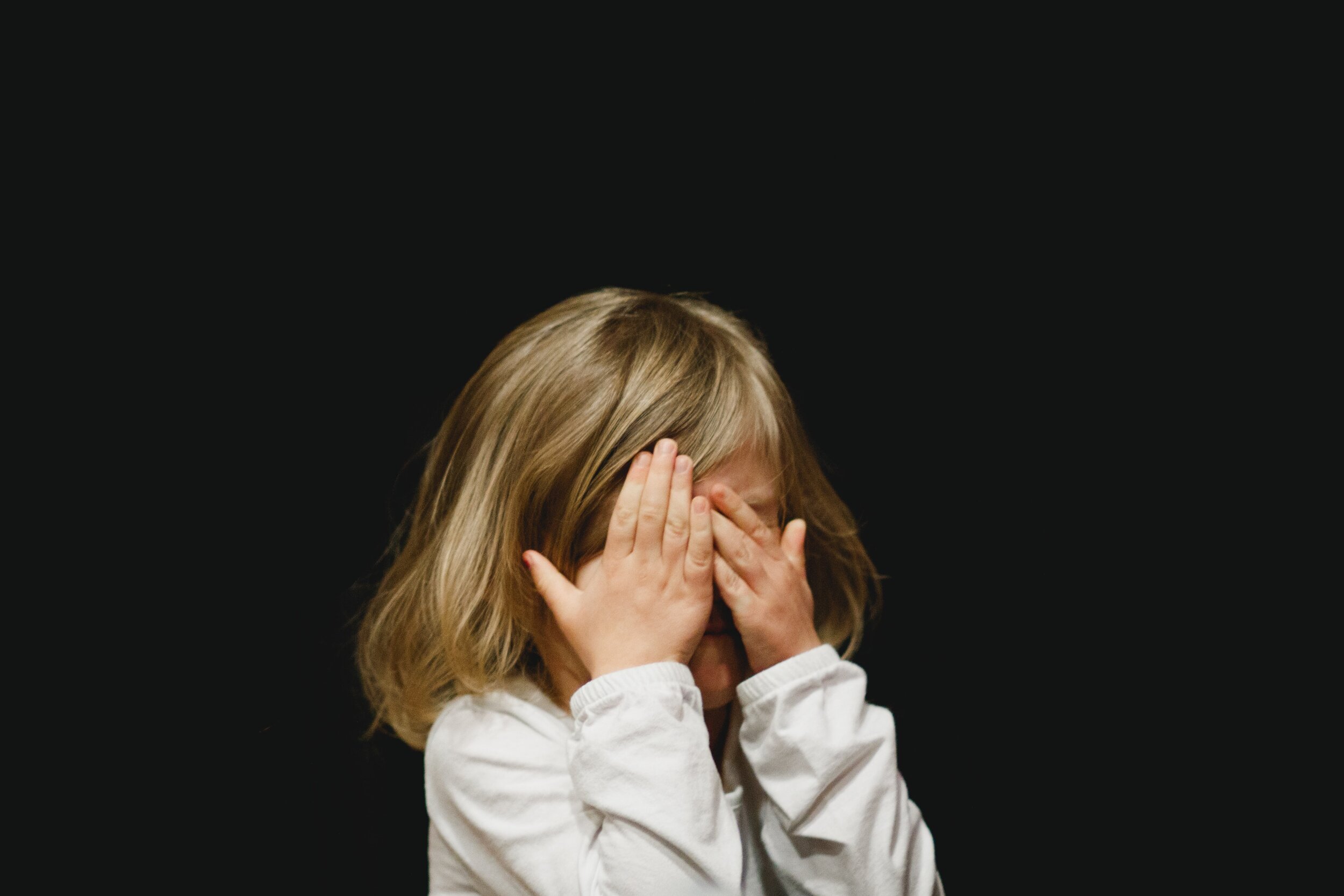Top 5 Signs of Child Abuse – What to Look For, and How You Can Help
It’s a sad reality that child abuse happens all around the world, every day, 365 days a year.
Children of all ages, races, religions, and socioeconomic statuses are affected — no one is immune.
In the United States, April is the National Child Abuse Prevention Month which recognizes the importance of families and communities working together to strengthen families to prevent child abuse and neglect.
Because when it comes to children, we are all responsible for their protection.
And in regards to abuse, wouldn’t you rather be proactive than reactive?
According to the Mayo Clinic Child and Family Advocacy Center, any intentional harm or mistreatment to a child under 18 years old is considered child abuse. Child abuse takes many forms including sexual, physical, and emotional, and can often occur at the same time (although not always).
Unfortunately in many cases, child abuse is done by someone the child knows and trusts — often a parent or other relative.
Being aware of possible signs of abuse, and being equipped with the necessary information is critical to both the prevention of child abuse and putting an end to it when abuse is suspected.
It’s explicitly taught that you are to report the abuser to proper authorities if child abuse is suspected. But what’s not explicitly taught is what suspected child abuse can look like.
To build your awareness, and put more tools in your Childcare Toolbox, here are the most common signs and symptoms of child abuse provided by the Children’s Advocacy Center for North Texas:
Top 5 Signs of Child Abuse
Change in behavior
Although this can be a bit nebulous, it’s important to take note of any sudden changes in a child’s behavior. Whether it’s a social butterfly suddenly wanting nothing to do with their previous activities or social circles, or a shy and introverted homebody suddenly becoming the life of the party, these changes shouldn’t be taken lightly.
A child who’s being abused may feel guilty, ashamed, or confused, and might cause them to cope with the abuse in unusual ways. A child suddenly withdrawing from friends or usual activities, or suddenly exhibiting anger, aggression, hostility or hyperactivity might be a warning sign that abuse has occurred.
Yes, there’s a chance this could be chalked up to kids testing boundaries, exploring the ins and outs of their personality, or typical teenage behavior. But sometimes it’s a sign of a deeper issue that needs to be addressed.
Open communication with your child is one of the best ways to discern if there is more to the story. Parents (or trusted adults) can talk to their children about the change in behavior by asking open-ended questions, and giving the child a safe and judgment-free space to express any concerns.
It’s critical to accept any form of outcry from a child with sincerity. Oftentimes the shame a child feels when sexually or physically abused is really intense. The last thing they need is their cry for help from a trusted adult to be brushed off.
Please note: you can’t look at this sign in isolation. Sometimes these changes in behavior can manifest from different instances such as a parent’s divorce, bullying, death of a loved one, or a change in their home life.
It’s for this reason that having a discussion with your child about their change in behavior is absolutely critical.
2. Change in performance or attendance at school
Whether it is an increase in tardiness or a decrease in attendance, changes in school performance could be a sign of possible abuse.
Maltreated adolescents and younger children have been found to be more absent from school compared to their peers, according to the Office of Juvenile Justice and Delinquency Prevention.
Children who have experienced abuse will look for ways to avoid their perpetrators. If someone within their school environment has maltreated him or her, a lack of interest (or attendance) in that activity, sport, or subject might develop. And on the other hand, a child who has a perpetrator at home might suddenly be reluctant to leave school activities to avoid going home.
It’s also possible to see a change in a child’s school performance. Whether that be grades slipping or a child suddenly focusing more on academia, both should alert you that something deeper may be going on under the surface.
3. Inappropriate sexual behavior
Inappropriate sexual behavior can indicate that a child or adolescent has been victimized.
However, someone can be a victim of abuse without displaying this behavior, just like a child who hasn’t been victimized could demonstrate these behaviors
When a child demonstrates sexual behavior or knowledge that is inappropriate for their age, the question must be posed – where did he or she learn that?
Inappropriate sexual behavior can manifest itself in many different ways and varies depending on the child’s age.
For preschoolers or toddlers, this might look like playing with toys in a sexual way, touching their own body or seeking to touch another child’s, or consistently trying to peep at other children in the bathroom.
For school-aged children or teenagers, this might look like using crude and coarse sexual language even when told not to, wanting or forcing other children to play sexual games, persistently flashing their bodies to others, seeking to touch others inappropriately, or demonstrating pornographic behavior, pictures, or talk.
CACNT offers a Happy Bear Program to schools in order to teach kids appropriate and safe touching. It is provided in both English and Spanish and has since been filmed to accommodate virtual learning as well. They also offer a Problematic Sexual Behavior Program which is designed for children who display some inappropriate behavior or have broken sexual norms.
4. Symptoms of anxiety or depression
What appears to be signs or symptoms of anxiety and depression can actually be signs of trauma or abuse.
Some of the most common emotional abuse signs include:
Delayed or inappropriate emotional development
Loss of self-confidence or self-esteem
Social withdrawal or a loss of interest or enthusiasm
Depression
Avoidance of certain situations
Desperately seeking affection
Loss of previously acquired developmental skills
In addition to these symptoms, a sudden change in a child’s eating patterns should also be noted. Often times children who have experienced abuse either overindulge or binge eat in order to comfort themselves with food, or seek control by refusing or carefully managing food intake.
A sudden change in sleeping could also be a sign of possible abuse or molestation. If abuse has taken place in the child’s bedroom, that alone can be a trigger for interrupted sleep or an overwhelming desire to sleep in another environment. Sleep is critical for healthy functioning, and when it is interrupted, it also affects changes in thinking, irritability, and behavior which can lead to other symptoms.
Although these behaviors are common for children of abuse, they are not normal and should be investigated by further conversations with the child.
5. Unexplained injuries
Children are commonly injured accidentally, so an age-appropriate injury should not by itself raise the suspicion of child abuse.
However, injury resulting from inappropriate supervision may raise the issue of neglect, or a history that is inconsistent with the child's injuries could be the hallmark of physical abuse.
More times than not, child abuse is a family crime, and in many cases, injuries to children who cannot yet talk may be attributed to the caregiver or parent. Physical abuse can affect children of all ages, but infants are most at risk for more severe physical abuse and/or fatality.
The most common indicators of physical abuse include:
Bruises on uncommonly injured body surfaces
Blunt-instrument marks or burns
Human hand marks or bite marks
Multiple injuries at different stages of healing
Evidence of poor care or failure to thrive
Circumferential immersion burns
How You Can Help Break the Cycle Of Child Abuse
“All children are born to grow, to develop, to live, to love, and to articulate their needs and feelings for their self-protection.” Alice Miller
Properly receive an outcry from a child
If a child divulges any information regarding being treated inappropriately (at any level) resist the urge to pepper them with questions. As caring adults, it’s second nature to want to know the details and get as much information as possible. However, too many questions can make children feel as though they are being challenged or tested as if they aren’t believed.
Instead, simply listen, absorb, and validate what the child is saying. This can be done by making statements rather than questions.
Examples might include:
“I’m so glad you told me.”
“I’m here to support you.”
“That must have been difficult for you.”
Most importantly, make sure they know it’s okay to speak up when they are feeling uncomfortable.
Teach body safety
Explain to your child that certain parts of their bodies are private, and not to be seen or touched by anyone. Be sure to explain where these private parts are, and teach the correct names. It’s important for kids to know and be comfortable with the names of their private areas and be able to talk about them openly.
Discuss boundaries
Every child is different in their level of comfort when it comes to physical affection. Encourage your child to set boundaries for their own bodies. Let them know if they are uncomfortable with a hug, a high-five or fist bump is perfectly fine.
It’s also important for children to identify trusted adults they can share information with when they feel their boundaries have been crossed. Teach them to speak up against individuals who make them uncomfortable and to share their feelings of discomfort or concern.
To learn more ways you can help keep children safe, CACNT offers a multitude of educational programs to keep you informed. Don’t hesitate to reach out.
If you suspect a child you know has experienced any form of child abuse or neglect, speak up. You can report suspected abuse online, or call the Texas Abuse Hotline at 1-800-252-5400.
As a community, we all have a role to play when it comes to breaking the cycle of child abuse. If you don’t advocate for those without a voice … who will?


